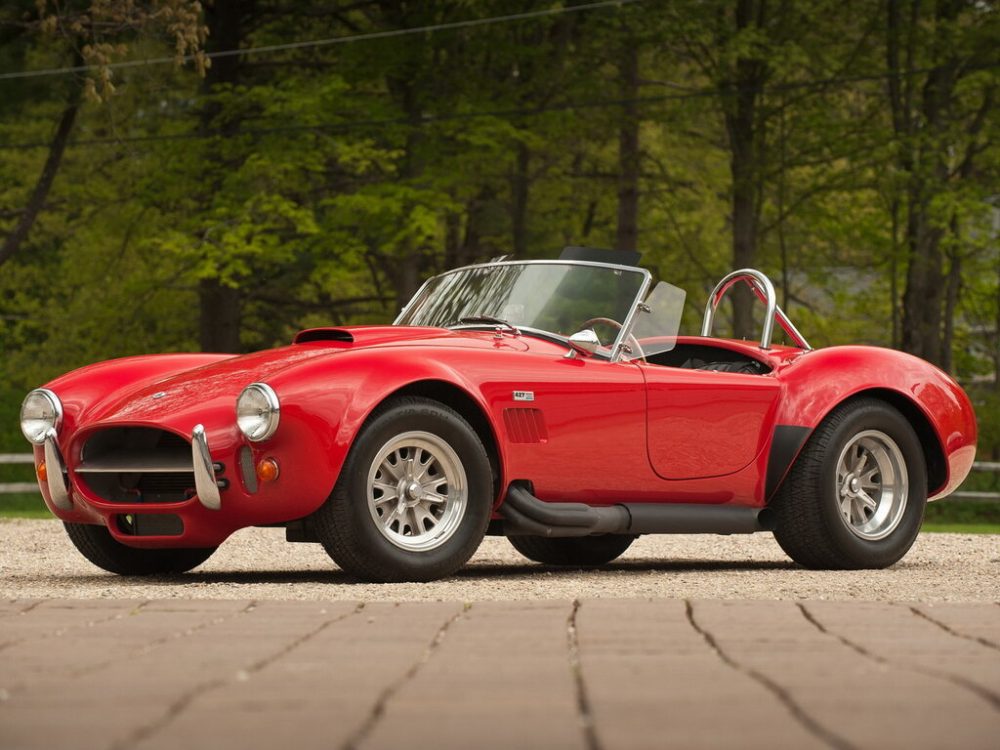The roar of a massive V8 engine, wrapped in sleek British aluminum – that’s the essence of the AC Cobra Mk III. Born in 1965, this Anglo-American hybrid redefined what a sports car could be, combining raw American muscle with European finesse.
This wasn’t just another fast car. The Mk III represented the pinnacle of Carroll Shelby’s vision, where every curve and component served a purpose. The result? A machine that could humble Ferrari on the track while turning heads on the street.
The Heart of the Beast
The Mk III’s story begins with its powerplant – a choice between two Ford V8 engines that turned this lightweight roadster into a force of nature. The “entry-level” 4.7-liter V8 delivered 271 horsepower, but it was the legendary 7.0-liter (427 cubic inch) engine that cemented the car’s reputation.
With the larger engine, the Cobra could sprint from 0-60 mph in just 4.2 seconds – a feat that would be impressive even by today’s standards. Every press of the accelerator unleashed a symphony of mechanical fury through the side-exit exhausts.
“I’ve driven countless classics, but nothing quite matches the raw excitement of a 427 Cobra. It’s like trying to tame a tornado with a steering wheel.” – James Mitchell, Classic Car Collector
Each engine was hand-assembled and tested, ensuring that every Cobra delivered the performance its looks promised. The four-speed manual transmission, while demanding, offered precise control over the enormous power output.
Engineering Excellence
The Mk III wasn’t just about straight-line speed. Its wider chassis accommodated larger wheels and tires, while coil spring suspension replaced the older leaf springs. The engineering team focused on several key improvements:
- enhanced frame rigidity for better handling;
- improved weight distribution;
- upgraded cooling system for race reliability;
- strengthened differential to handle the increased torque;
- revised suspension geometry for better cornering stability.
These modifications transformed the Cobra from a mere hot rod into a sophisticated racing machine capable of competing at the highest levels of motorsport.
Racing Heritage
The track record of the Mk III reads like a victory lap through racing history. Every weekend saw these machines battling against Europe’s finest, often emerging victorious despite their relatively simple design.
“Racing a 427 Cobra was like dancing with dynamite – thrilling, dangerous, and absolutely addictive.” – Robert Turner, Former Race Driver
Each race victory added to the Cobra’s mystique, with the car proving particularly dominant in American road racing championships. The combination of massive power and lightweight construction made it nearly unbeatable on fast circuits.
The Cobra’s racing success wasn’t just about raw speed – it demonstrated remarkable reliability when properly prepared, often finishing endurance races while more exotic competitors retired with mechanical issues.
Legacy and Influence
Few cars have left such an indelible mark on automotive culture as the Cobra Mk III. Its influence extends far beyond its brief production run, inspiring countless replicas and tributes.
The Cobra established a template that many would follow: take a lightweight British sports car, add American V8 power, and create something greater than the sum of its parts. Key aspects of its enduring appeal include:
- the perfect balance of power and weight;
- timeless styling that combines elegance with aggression;
- mechanical simplicity that enables home maintenance;
- racing pedigree that few cars can match;
- exclusivity due to limited production numbers.
Today, original Mk IIIs command seven-figure prices at auction, testament to their historical significance and enduring appeal.
A Timeless Icon
The AC Cobra Mk III represents more than just performance numbers or racing victories. It embodies the spirit of an era when passionate individuals could still reshape the automotive landscape through sheer determination and engineering brilliance.
This wasn’t a car designed by committee or focus groups – it was the product of clear vision and purpose, executed with remarkable skill and daring.
Pros and Cons
| Advantages | Disadvantages |
|---|---|
| Incredible power-to-weight ratio delivering exceptional performance | Limited weather protection due to basic soft top |
| Exceptional handling characteristics for its era | Challenging to drive in wet conditions |
| Timeless design that still turns heads today | High fuel consumption, especially with the 427 engine |
| Strong investment potential due to rarity | Expensive maintenance and parts availability |
| Pure mechanical connection without electronic aids | Limited luggage space for touring |
| Legendary soundtrack from the V8 engine | Requires significant skill to drive at the limit |
| Simple mechanics allow for home maintenance | Comfort sacrificed for performance |
The AC Cobra Mk III remains one of the most significant sports cars ever created. Despite its challenges and limitations, it delivers an automotive experience that modern cars, with all their technology and refinement, struggle to match. It’s a reminder that sometimes the simplest solutions – a powerful engine in a lightweight chassis – are the most effective.

